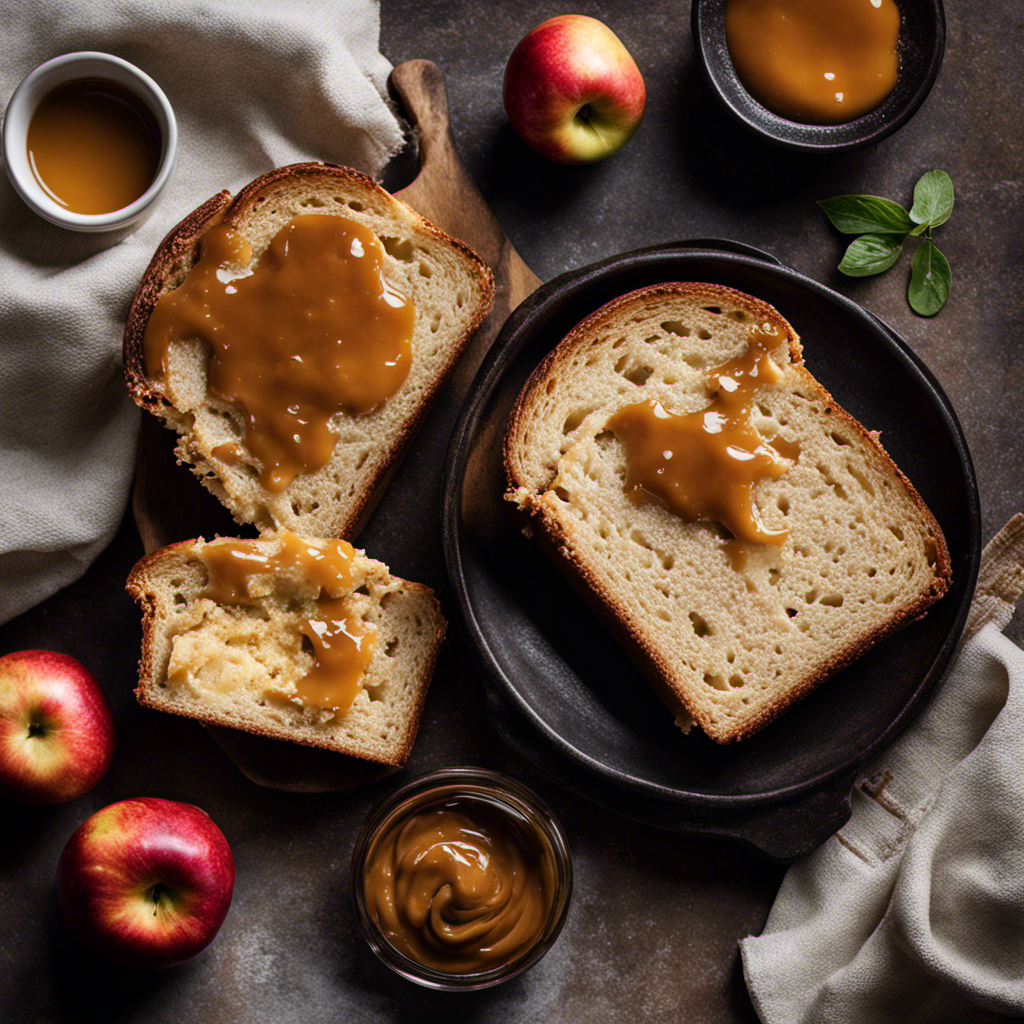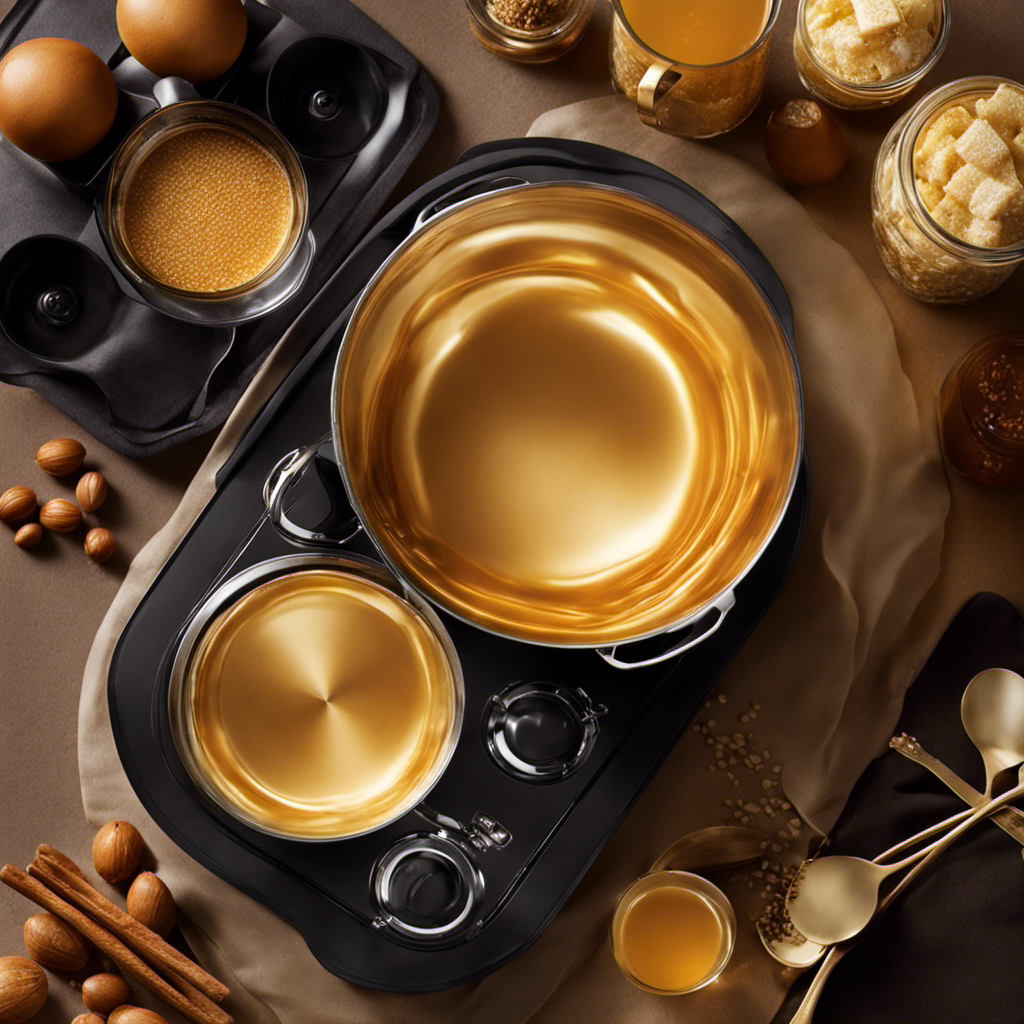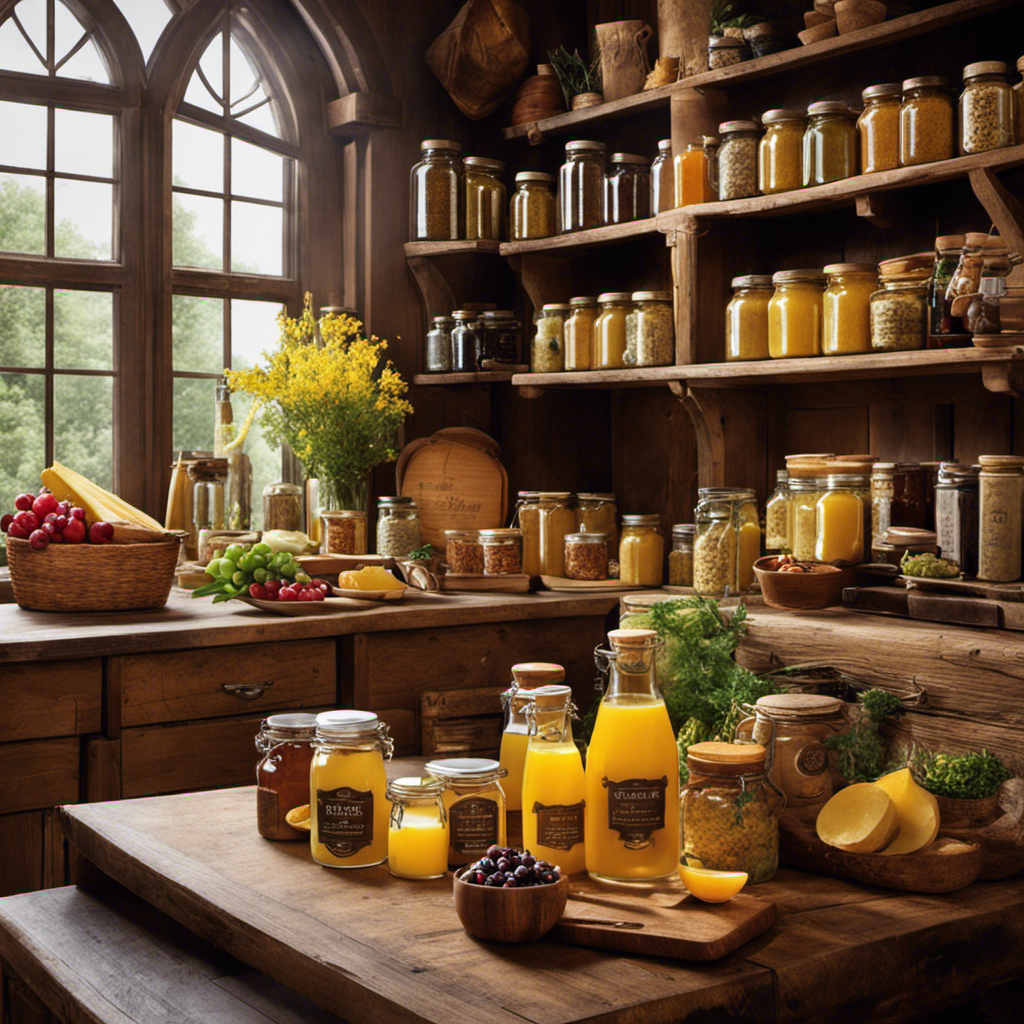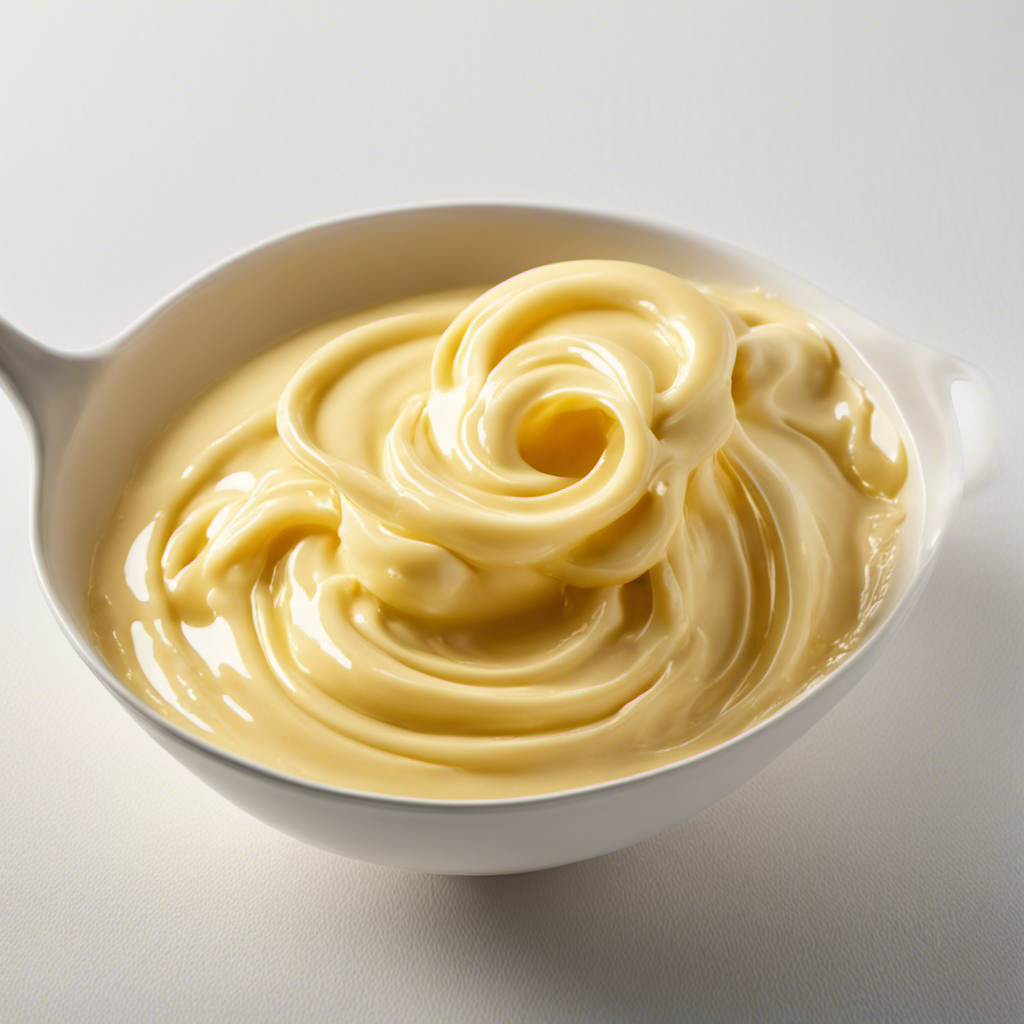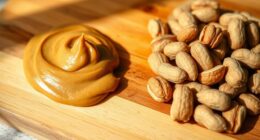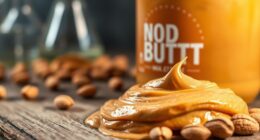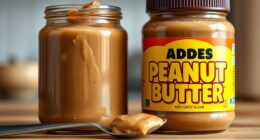Picture yourself in the coziness of your kitchen, surrounded by the aroma of fragrant spices. You reach out to your pantry and grab a jar of delicious, velvety apple butter.
But wait, what do you use apple butter for? In this article, we’ll explore the versatile ways to enjoy this delicious spread.
From slathering it on toast to glazing meats, incorporating it into dressings or even topping your favorite desserts, apple butter is the secret ingredient that will elevate your culinary creations.
Let’s dive in and discover the endless possibilities of apple butter.
Key Takeaways
- Apple butter can be used in a variety of breakfast and baking recipes, such as spreading on toast or incorporating into homemade bread or muffins.
- It is also a versatile ingredient in desserts and sweet treats, acting as a filling or topping for cakes and scones, and adding flavor and moisture to baked goods.
- Apple butter can be used as a glaze or marinade for meats, enhancing their tenderness and juiciness, and adding depth and complexity to salad dressings or marinades.
- Making homemade apple butter allows for customization of flavors and sweetness, while also offering the health benefits of fiber and antioxidants found in apples.
Spreading on Toast or English Muffins
You can spread apple butter on toast or English muffins for a delicious breakfast treat. Apple butter is a versatile condiment that can be used in a variety of ways. It is the perfect alternative to traditional sandwich spreads like mayo or mustard.
The rich, sweet flavor of apple butter adds a unique twist to your morning meal. Imagine taking a warm slice of toast and slathering it with a thick layer of apple butter. As you take a bite, the smooth texture and intense apple flavor combine, creating a heavenly experience for your taste buds.
You can also use apple butter as a topping for waffles, adding a sweet and fruity element to an already scrumptious breakfast. Start your day off right with a spread of apple butter on your toast or English muffins.
Mixing Into Oatmeal or Yogurt
Mix apple butter into your oatmeal or yogurt for a delicious and creamy addition to your breakfast. The versatility of apple butter goes beyond spreading it on toast or English muffins. Here are some sophisticated ways to enjoy apple butter in your morning meal:
-
Mixing into smoothies: Add a spoonful of apple butter to your favorite smoothie recipe for a burst of fruity flavor and a velvety texture. It pairs well with ingredients like bananas, spinach, and almond milk, creating a perfectly balanced and nutritious blend.
-
Pairing with cheese: Take your breakfast to the next level by combining apple butter with a variety of cheeses. Spread it on a bagel or cracker and top it with creamy brie or sharp cheddar for a delightful sweet and savory combination.
-
Baking apple butter bread or muffins: Use apple butter as a secret ingredient in your homemade bread or muffin recipes. It adds moisture, depth of flavor, and a touch of sweetness, making your baked goods irresistibly delicious.
Baking Apple Butter Bread or Muffins
To create a flavorful twist, incorporate apple butter into your favorite bread or muffin recipes. The rich, tangy taste of apple butter adds a delicious depth of flavor to your baked goods, making them extra moist and irresistible.
Imagine biting into a warm, freshly baked apple butter scone, the sweet aroma of cinnamon and nutmeg filling the air. The scone is tender and crumbly, with a subtle hint of apple dancing on your taste buds.
Or picture a slice of apple butter coffee cake, the moist, buttery cake dotted with pockets of sweet apple butter, topped with a crunchy streusel topping. It’s the perfect accompaniment to your morning coffee or afternoon tea.
So next time you’re in the mood for baking, don’t forget to reach for that jar of apple butter and add an extra burst of flavor to your breads and muffins.
Now, let’s move on to the next delicious way to use apple butter: glazing pork or chicken.
Glazing Pork or Chicken
When it comes to glazing pork or chicken, there are two key points you should consider: savory flavor pairing and enhanced meat tenderness.
Savory flavor pairing involves combining ingredients that complement and enhance the natural flavors of the meat, creating a delicious and well-balanced dish.
Additionally, the glaze helps to tenderize the meat, resulting in a juicy and tender texture that is sure to impress your taste buds.
Savory Flavor Pairing
Have you ever tried pairing apple butter with savory dishes like roasted pork or grilled cheese sandwiches? If not, you’re missing out on a delightful flavor combination that will elevate your meals to a whole new level.
Apple butter, with its rich and sweet taste, can be used in a variety of unexpected pairings that will surely impress your taste buds. Here are some apple butter recipes and unexpected pairings to try:
- Spread apple butter on a grilled cheese sandwich for a sweet and savory twist.
- Use apple butter as a glaze for roasted pork to add a caramelized flavor.
- Mix apple butter with BBQ sauce for a tangy and sweet marinade for chicken.
By incorporating apple butter into your savory dishes, you’ll be amazed at how it enhances the overall flavor profile.
Speaking of enhancing, did you know that apple butter also enhances meat tenderness? Let’s dive into that next!
Enhances Meat Tenderness
Mixing apple butter with BBQ sauce creates a tangy and sweet marinade that enhances the tenderness of the meat. This apple butter marinade is perfect for infusing flavor and juiciness into your favorite cuts of meat.
Whether you’re grilling chicken, pork, or beef, the apple butter marinade adds a unique twist that will have your taste buds dancing with delight.
One delicious way to enjoy the apple butter marinade is by making apple butter meatballs. Simply combine ground meat, breadcrumbs, eggs, and a generous amount of apple butter marinade. Roll the mixture into bite-sized balls and bake them until they are cooked through. The result is a mouthwatering dish that is both savory and slightly sweet, thanks to the apple butter marinade.
In addition to using the apple butter marinade for meat, you can also incorporate it into salad dressings or marinades for vegetables. The tangy sweetness of the apple butter adds depth and complexity to any dish, making it a versatile ingredient in your culinary repertoire.
Incorporating Into Salad Dressings or Marinades
You can easily enhance your salad dressings or marinades by adding apple butter. This versatile ingredient not only adds a touch of sweetness, but also brings a depth of flavor that will elevate your dishes to a whole new level.
Here are some creative cooking uses for apple butter:
- Whisk apple butter into a vinaigrette to give it a hint of tartness and a velvety texture.
- Use apple butter as a glaze for grilled or roasted meats, imparting a caramelized and slightly smoky flavor.
- Mix apple butter with mayonnaise or Greek yogurt to create a creamy and tangy dressing for coleslaw or potato salad.
By incorporating apple butter into your salad dressings or marinades, you introduce a unique twist that will impress your family and friends.
Now, let’s move on to how apple butter can be used for topping ice cream or pancakes.
Topping Ice Cream or Pancakes
Looking to add a burst of flavor to your favorite fall dishes? Look no further than apple butter!
This versatile flavor enhancer can be used in a variety of ways, from topping your morning pancakes to adding a touch of sweetness to your favorite ice cream.
Not only does it bring a deliciously rich and smooth texture, but it also adds the perfect fall breakfast addition to start your day off right.
Versatile Flavor Enhancer
Apple butter is a versatile spread that adds a burst of flavor to a variety of dishes. Whether you’re looking to enhance sweet or savory dishes, apple butter has unique condiment uses that will elevate your culinary creations.
Here are some ways you can incorporate apple butter into your cooking:
- Spread it on a warm biscuit or toast for a delicious breakfast treat.
- Use it as a glaze for roasted meats, adding a hint of sweetness and tang.
- Mix it into your favorite barbecue sauce for a twist on traditional flavors.
- Blend it into smoothies or yogurt for a fruity and creamy addition.
- Swirl it into oatmeal or overnight oats to give your breakfast a comforting fall flavor.
With its rich and caramelized taste, apple butter is the perfect fall breakfast addition that will bring warmth and depth to your dishes.
Perfect Fall Breakfast Addition
With its rich and caramelized taste, apple butter makes for a perfect addition to your fall breakfast. This delicious spread is made by slow-cooking apples with sugar and spices until they become thick and spreadable.
Apple butter can be used in various ways to elevate your morning meal. Spread it on warm toast or bagels for a sweet and comforting start to your day. You can also swirl it into oatmeal or yogurt to add a burst of flavor.
Not only does apple butter taste amazing, but it also offers health benefits. Apples are packed with fiber and antioxidants, making apple butter a nutritious choice. Plus, it’s a great way to enjoy the flavors of autumn all year round.
Want to try making your own apple butter? Look up apple butter recipes online and get ready to savor the taste of fall in every bite.
Conclusion
So there you have it, all the wonderful ways you can use apple butter in your daily culinary adventures.
Whether you’re spreading it on warm toast or mixing it into your morning yogurt, this versatile condiment adds a burst of flavor to every bite.
And let’s not forget about the savory side – from glazing pork or chicken to incorporating it into salad dressings or marinades, apple butter can elevate your savory dishes to a whole new level.
And of course, let’s not forget the sweet treats – topping ice cream or pancakes with apple butter is a deliciously decadent indulgence.
So go ahead, grab a jar of apple butter and let your imagination run wild in the kitchen. Your taste buds will thank you.
